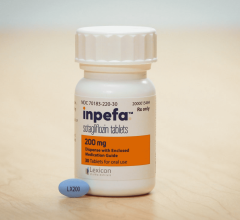October 2, 2012 — A novel blood thinner recently approved by the U.S. Food and Drug Administration (FDA), Pradaxa (dabigatran), has been rapidly adopted into clinical practice, yet thus far has had little impact on improving treatment rates for atrial fibrillation. This is according to a new study led by researchers from the Johns Hopkins Bloomberg School of Public Health that examined national trends in oral anticoagulant use. They found that despite rapid adoption of dabigatran for the treatment of atrial fibrillation, a large proportion of patients — two in five — did not receive oral anticoagulant therapy. In addition, although the majority of dabigatran utilization was for its FDA-approved indication, atrial fibrillation, an increasing proportion of use was for off-label indications such as venous thromboembolism (VTE). The results are featured in the September 2012 issue of Circulation: Cardiovascular Quality and Outcomes.
“Dabigatran has been briskly adopted into clinical practice since its October 2010 FDA approval for the prevention of stroke among patients with nonvalvular atrial fibrillation,” said G. Caleb Alexander, M.D., MS, lead author of the study and a research scientist in the Bloomberg School’s Department of Epidemiology. “Between 2007 and 2011, use of the oral anticoagulant warfarin declined from approximately 2.1 million quarterly physician visits to approximately 1.6 million visits . . . while since its release, dabigatran use increased from 3.1 percent to 18.9 percent of physician visits where an oral anticoagulant was used.”
Using data from the IMS National Disease and Therapeutic Index, a nationally representative audit of ambulatory providers, Alexander and colleagues quantified patterns of oral anticoagulant use among subjects between 2007 and 2011. Focusing on the oral anticoagulant drugs dabigatran and warfarin, they examined treatment patterns by patient age, provider specialty and common indications for oral anticoagulation. Pharmacy expenditures for warfarin and dabigatran were quantified using a nationally representative audit of retail, mail order and long-term care pharmacies.
According to the National Institutes of Health, atrial fibrillation is the most common type of arrhythmia and, compared with their counterparts, patients with atrial fibrillation have an increased risk of stroke. Previous research has indicated the use of oral anticoagulants may reduce the risk of thromboembolic events like stroke by up to two-thirds and is especially vital in the prevention of such events among high-risk individuals.
For more information: http://www.jhsph.edu/news/news-releases/2012/alexander_atrial_fibrillation.html


 July 10, 2024
July 10, 2024 








